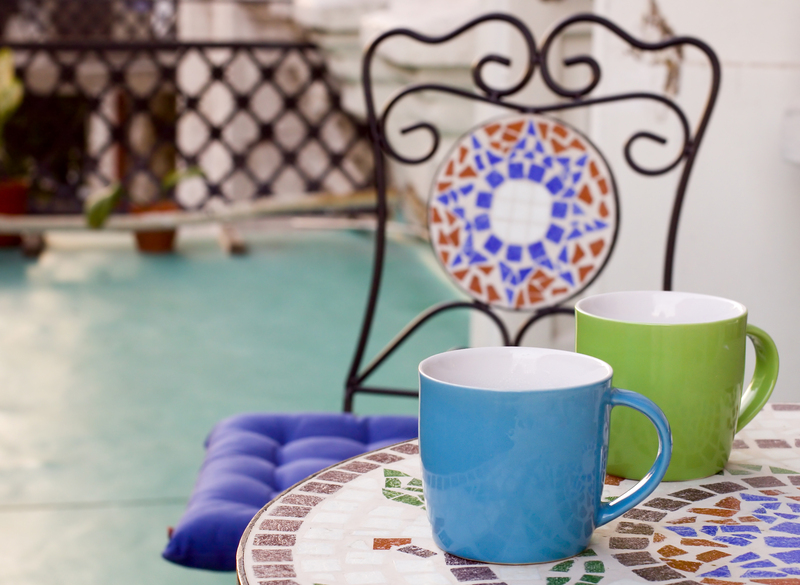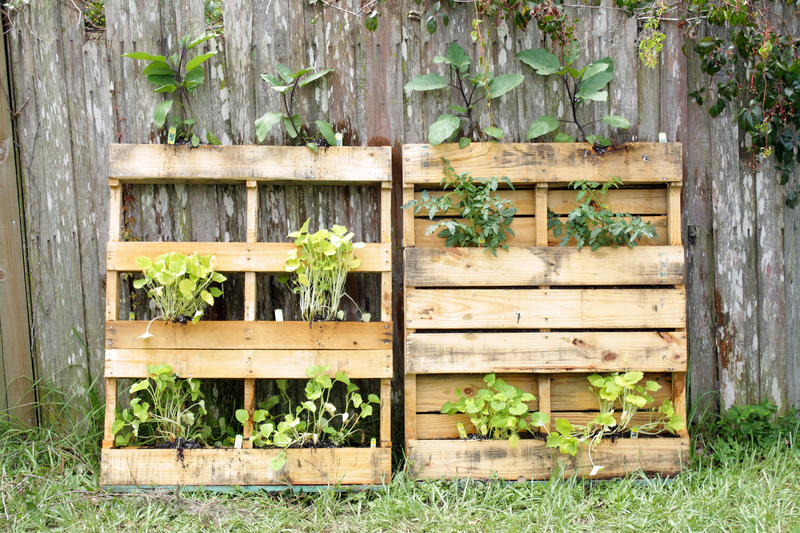Hassle-Free Plant Pot Disposal Techniques
Disposing of plant pots may seem like a simple task, but as environmental awareness grows, choosing the right plant pot disposal techniques becomes more important than ever. From plastic plant pots to clay, ceramic, and even biodegradable containers, understanding the proper way to dispose of them can make a significant difference in reducing landfill waste, saving resources, and even nurturing your garden. In this comprehensive guide, we'll explore various hassle-free plant pot disposal methods, environmentally-friendly alternatives, and what every gardener or homeowner needs to know before tossing an old pot into the trash.
Why Proper Plant Pot Disposal Is Important
Plant containers come in a variety of materials, most commonly plastic, terracotta, ceramic, and biodegradable compounds. Millions of pots are purchased every year, yet many end up in landfills where, particularly for plastics, they can take centuries to break down. Proper plant pot disposal not only reduces the burden on waste facilities but also helps conserve precious resources by supporting recycling and reusing initiatives.
- Reduces landfill waste and environmental pollution
- Supports plant pot recycling and reusing efforts
- Encourages sustainable gardening habits
- Conserves resources by allowing materials to be repurposed

Understanding Plant Pot Materials
Before selecting your preferred disposal technique, it's crucial to identify the type of pot you want to get rid of. This determines the best disposal option and any local policies you'll need to follow.
Plastic Plant Pots
- Usually made from polypropylene (PP) or polyethylene (PE)
- Lightweight and widely used but infamous for their low recycling rates
- Often labeled with recycling #5 or #2
Terracotta and Clay Pots
- Natural materials that can be crushed and reused in garden projects
- Heavier and prone to breakage
- Not typically recyclable in municipal systems
Ceramic and Glazed Pots
- Decorative and sturdy, sometimes coated with glazes
- Cannot usually be recycled; best to reuse or upcycle
Biodegradable Pots
- Made from coir, peat, rice hulls, paper, or other organic materials
- Break down naturally in compost or soil
Hassle-Free Techniques for Plant Pot Disposal
No matter what type of plant container you have, there is a simple, eco-friendly disposal method for you. Below are actionable ways to handle unwanted pots with minimal hassle.
1. Plant Pot Recycling Programs
Many local garden centers, nurseries, and some municipal waste authorities offer plant pot recycling programs. This is one of the most hassle-free plant pot disposal techniques, especially for plastics.
- Check with local retailers: Many garden centers accept used pots (especially brands like Lowe's, The Home Depot, or independent nurseries).
- Verify pot cleanliness: Remove soil and labels before dropping them off.
- Confirm materials: Only certain plastics are accepted, usually #2 or #5; look for recycling symbols on the bottom.
Tip: Use a brush or hose to clean pots before recycling.
2. Creative Reuse and Upcycling
Reusing old plant pots is one of the most sustainable and creative solutions. Upcycling not only reduces waste but also provides functional and decorative benefits.
- Home organization: Use pots to store tools, toys, or craft supplies.
- DIY garden projects: Turn broken terracotta into mosaic stepping stones or drainage for beds.
- Arts and crafts: Paint or decorate pots as planters, candle holders, or lanterns.
- Seed starting: Small pots are perfect for beginning seeds each spring.
3. Donating Old Pots
If you have widely-used plastic pots or sturdy ceramic containers in good condition, consider donating them.
- Community gardens: These spaces often need extra pots for seedlings and projects.
- Schools and youth centers: Many have gardening clubs or fundraisers.
- Charity shops or plant swaps: Give your pots a second life!
4. Composting Biodegradable Pots
Biodegradable containers are designed for easy disposal and minimal impact on the earth. Simply add them to your compost pile or bury them directly in the ground.
- Shred or break up large pots to speed up decomposition.
- Confirm materials: Coir, peat, and paper break down readily; avoid so-called "biodegradable plastics" unless certified compostable.
- Monitor compost: Ensure pots break down fully before spreading finished compost.
5. Terracotta and Ceramic Pot Disposal
While these materials aren't accepted in regular recycling, they can still be put to good use.
- Break up and use as drainage in the bottom of new pots or garden beds.
- Crush into paths or stepping stone mosaics for a rustic touch in your landscape.
- Offer broken ceramics to local artists or schools for use in art projects.
- Disposal as rubble: If not reused, broken pots can sometimes be added to construction debris recycling, but check local guidelines first.
How To Clean and Prepare Pots for Disposal
Regardless of your chosen strategy, clean, empty pots are always easier to recycle, donate, or repurpose. Here's how to clean them quickly:
- Empty out all soil and dead plant material.
- Remove old labels or stickers.
- Scrub pots with a brush and mild detergent, then rinse well.
- Let the pots dry before donation or recycling.
Sterilizing pots with a solution of 10% bleach and water is also recommended if you're giving them away or reusing for new plants, helping prevent the spread of plant diseases.
Avoiding Common Mistakes in Plant Pot Disposal
Many people unknowingly contribute to landfill waste by improperly discarding pots. Here are some top mistakes to avoid:
- Placing plastic pots in residential recycling: Most curbside systems do not accept plant pots because of residue or incompatible plastics.
- Throwing terracotta and ceramics in the trash: These materials can be reused or donated rather than filling up landfills.
- Mixing contaminated or labeled pots with recycling: Only clean, label-free pots are recyclable.
- Ignoring local recycling rules: Guidelines vary--always check first!
Zero-Waste Gardening Tips
If you want to minimize future plant pot disposal needs altogether, consider integrating zero-waste gardening practices into your routine:
- Buy plants in bulk through nurseries that use reusable flats and trays.
- Choose bare-root or plug plants instead of those in disposable pots.
- Opt for biodegradable or compostable pots whenever possible.
- Swap or share pots with other gardeners, either privately or at community events.

Frequently Asked Questions About Hassle-Free Plant Pot Disposal Techniques
Can I put plastic plant pots in my home recycling bin?
No. Most home recycling bins do not accept plastic plant pots because the shape, contamination, or resin type does not match regular recycling streams. Always check with your waste hauler or municipality and look for dedicated plant pot collection programs.
What do I do with broken terracotta pots?
Broken terracotta pots are not recyclable in curbside programs. Instead, break them into small pieces and use as drainage in pots, paths, or garden beds, or incorporate into garden art.
Are biodegradable pots always compostable?
Not always. Only those made from all-organic, unsynthetic materials like coir, peat, or uncoated paper break down easily. "Biodegradable plastics" need industrial composting, which isn't available everywhere. Read labels and check for certification.
How can I responsibly dispose of ceramic pots?
Ceramic pots are best reused or donated. If broken, offer the pieces for mosaic crafts or, as a last resort, dispose of them as construction rubble if permitted.
Where can I find plant pot recycling programs?
Check your local:
- Garden centers or nurseries
- Municipal or county recycling pages
- Community "freecycle" or plant swap groups
Conclusion: Making Plant Pot Disposal Easy and Eco-Friendly
The next time you're faced with a pile of empty or damaged plant containers, remember: disposing of plant pots doesn't have to be a hassle. With a little know-how and a commitment to sustainability, you can easily recycle, reuse, or responsibly discard every type of pot. By embracing these hassle-free plant pot disposal techniques, you help reduce landfill waste, support your community, and keep your garden eco-friendly and vibrant.
Ready to make your gardening hobby greener? Start by adopting these techniques for plant pot disposal today--and inspire others to do the same!